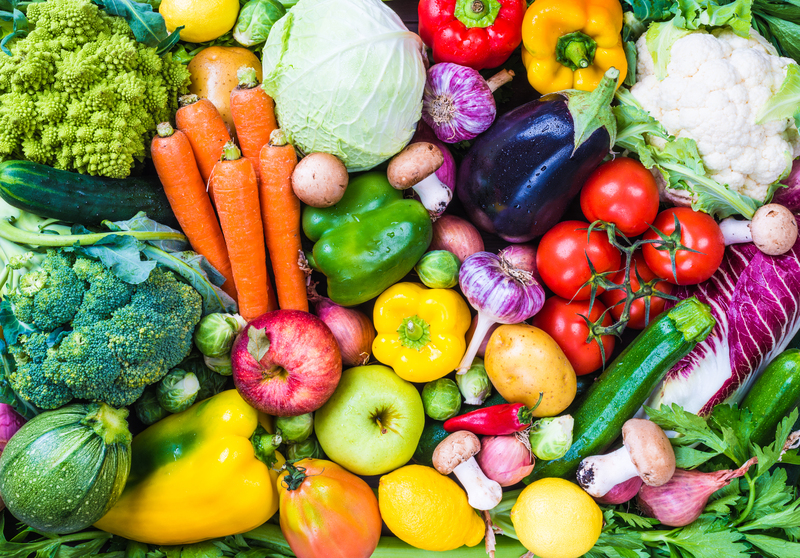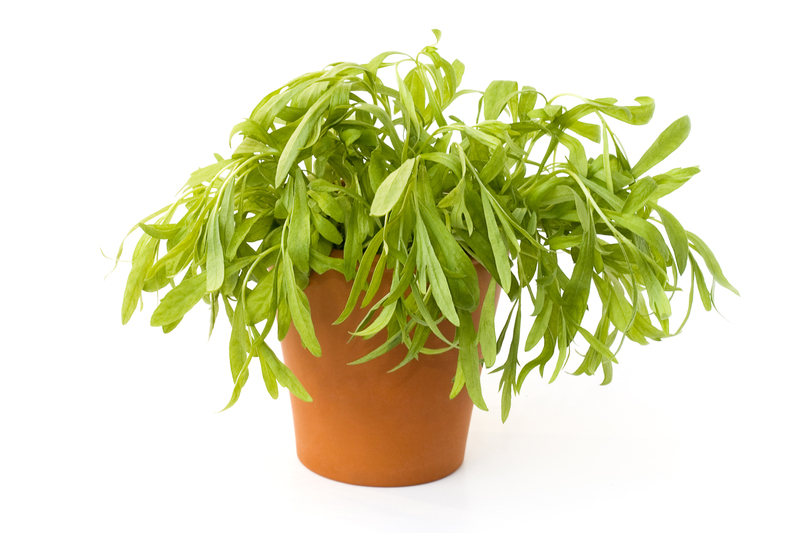The Art of Converting Waste into Nutrient-Packed Soil
Posted on 12/09/2025
The Art of Converting Waste into Nutrient-Packed Soil
In our increasingly eco-conscious world, the art of converting waste into nutrient-packed soil stands as a testament to sustainable living. Not only does this practice tackle the mounting issue of organic waste, but it also plays a pivotal role in generating rich, fertile soil that rejuvenates gardens, farms, and landscapes. Whether you're a seasoned gardener, a novice composter, or a sustainability enthusiast ready to embrace change, understanding how to transform kitchen and yard waste into nutrient-rich compost is both essential and rewarding.
Why Transform Waste into Nutrient-Rich Soil?
Organic waste, which includes kitchen scraps, yard clippings, and agricultural debris, makes up a significant portion of landfill content. When sent to landfills, this waste decomposes anaerobically, producing methane, a potent greenhouse gas. By instead converting waste into compost -- a practice known as organic waste recycling -- we can dramatically reduce our environmental impact.
- Reduces landfill waste and associated pollution
- Creates nutrient-rich soil that improves plant health
- Saves money on store-bought fertilizers and soil amendments
- Promotes biodiversity in the garden
- Encourages a circular, sustainable approach to resource management

The Science Behind Nutrient-Packed Soil Creation
Transforming waste into fertile compost is both an art and a science. Composting involves the decomposition of organic matter by microorganisms such as bacteria and fungi, aided by invertebrates like earthworms. They break down complex organic materials into humus, which is the life-giving component of healthy soils.
How Composting Works
For the composting process to work efficiently, four main elements are necessary:
- Carbon: Provides energy for microbes and is found in browns such as dried leaves, straw, cardboard, and wood chips.
- Nitrogen: Vital for microbial growth, abundant in greens like fruit and vegetable scraps, coffee grounds, and grass clippings.
- Water: Keeps the compost moist, creating ideal conditions for decomposition.
- Oxygen: Ensures aerobic decomposition, preventing foul odors and generating heat.
Methods for Converting Waste into Nutrient-Dense Soil
There are various ways to convert waste into nutrient-rich soil. Each method has unique benefits and is suited to different circumstances. Let's explore the most popular techniques.
1. Traditional Composting
Backyard or garden composting is the most widespread way to turn organic waste into fertile soil. It typically involves:
- Collecting brown and green materials in a pile or bin
- Layering materials to maintain a balanced carbon-to-nitrogen ratio (ideally 30:1)
- Aerating with regular turning or stirring
- Monitoring moisture -- the pile should feel like a wrung-out sponge
With the right conditions, compost can be ready in as little as two to four months. The end product is dark, crumbly, and earthy-smelling soil that is packed with nutrients.
2. Vermicomposting (Using Worms)
Vermicomposting is a technique where red wiggler worms eat kitchen waste and transform it into rich worm castings (worm poop). These castings are a highly potent organic soil enhancer, infusing soil with beneficial microbes and nutrients.
- Needs a vermicompost bin kept in a shady, protected location
- Worms require bedding (shredded newspaper, coconut coir) and moist conditions
- Feed them regularly with non-acidic, non-oily fruit and vegetable scraps
- Harvest worm castings every few months and blend into potting soil or topdress garden beds
3. Bokashi Composting (Fermentation)
Bokashi composting uses beneficial microbes to ferment food waste -- including meat, dairy, and cooked foods that traditional compost piles can't handle. The process:
- Involves layering food waste with bokashi bran in an airtight bucket
- Takes around 2 weeks to ferment, after which the "pickled" waste is buried in soil or a compost pile to finish breaking down
- Produces a liquid "bokashi tea" that can be diluted and used as a fertilizer
This technique is perfect for urban dwellers and those wanting to minimize odors while dealing with diverse organic waste.
4. Trench Composting
Trench or pit composting is a simple, low-effort way to convert waste into nutrient-packed garden soil. It involves:
- Digging a trench or hole 12-18 inches deep
- Filling it with kitchen scraps and garden clippings
- Covering the waste with soil and allowing it to decompose underground over several months
This method directly feeds the soil ecosystem, enriching it for future planting.
Best Materials for Making Compost
The quality of your finished nutrient-rich soil depends on the variety and balance of materials you compost. Here's what to include and avoid.
What to Compost
- Fruit and vegetable peels
- Coffee grounds and filters
- Eggshells (crushed)
- Tea bags (avoid those with synthetic fibers)
- Grass clippings and leaves
- Shredded paper and cardboard
- Wood chips and sawdust (from untreated wood)
- Garden trimmings
What to Avoid
- Meat, bones, and dairy (unless using bokashi)
- Greasy or oily foods
- Synthetic or plastic items
- Diseased plants or weeds with seeds
- Pet waste (due to pathogens)
- Coal or charcoal ash
How to Achieve High-Quality, Nutrient-Packed Soil
Mastering the art of converting waste into soil is a process of observation and adjustment. Keep these composting tips in mind for the best results:
- Shred or chop larger items to speed up decomposition
- Monitor the moisture level -- too dry slows composting, too wet causes bad smells
- Turn your pile regularly for aeration, unless using passive/trench or bokashi methods
- Maintain balance between browns and greens for a healthy, odor-free compost
- Patience is key: Compost is ready when it's dark, crumbly, and no recognizable ingredients remain
By following these steps, you'll create a nutrient-dense soil amendment that rivals store-bought fertilizers, but at a fraction of the cost and environmental impact.
The Many Benefits of Nutrient-Rich Soil
The end product of converting kitchen and yard waste into compost offers a host of advantages for both home gardeners and the wider environment:
- Improves soil structure -- enriching sandy or clay soils to better retain water and nutrients
- Boosts plant growth thanks to abundant natural nutrients
- Supports beneficial soil microbes, fungi, and earthworms
- Reduces the need for chemical fertilizers and pesticides
- Lowers household and municipal waste
- Sequesters carbon, supporting climate change mitigation
If you dream of a flourishing vegetable patch, vibrant blooms, or simply wish to tread more lightly on the Earth, homemade compost is the foundation.
Common Challenges and How to Overcome Them
While the art of waste-to-soil transformation is simple in theory, newcomers sometimes face challenges. Here's how to troubleshoot the most common composting issues:
Why is My Compost Pile Not Decomposing?
- Too dry: Sprinkle with water.
- Too many browns vs greens: Add more fruit/veggie scraps or grass.
- Low temps in winter: Insulate or add more materials to generate heat.
What if My Compost Smells Bad?
- Too wet or compacted: Turn the pile and add more browns.
- Inclusion of inappropriate items: Remove meat, oil, or dairy, and keep to recommended materials.
What About Pests?
- Cover fresh materials under browns or soil.
- Use a secure compost bin with mesh or lids to deter rodents.
How to Use Your Homemade, Nutrient-Packed Soil
Once your compost is finished, it becomes a powerful soil conditioner for all types of gardening and landscaping projects.
- Mix into vegetable beds to boost productivity
- Topdress lawns and ornamental borders for sustained release of nutrients
- Blend into potting mixes for houseplants
- Create compost tea by soaking finished compost in water and using as a liquid feed
The benefits ripple outward: better yields, healthier plants, improved water retention, and a healthier garden ecosystem.
Composting in Small Spaces: Urban and Indoor Solutions
Not everyone has access to a backyard, but innovation in waste-to-soil composting means you can create rich soil anywhere:
- Countertop composters for kitchen use
- Balcony worm bins for apartments
- Bokashi buckets under the sink
- Community composting programs at urban gardens or local farms
The principle remains the same: with commitment and creativity, any space can contribute to the regeneration of soil from waste.

Embracing the Art and Science of Soil Creation
In conclusion, the art of converting waste into nutrient-packed soil combines eco-friendly principles, hands-on activity, and science-backed methods. By reimagining food scraps, yard clippings, and paper products as potential "black gold," you'll cultivate both thriving gardens and a cleaner planet.
Start small: Even a simple bin on a balcony can signal the start of a soil revolution. Share your extra compost with neighbors, schools, or local food growers, and inspire others to join the movement.
The journey towards zero waste and fertile gardens is ongoing -- but every banana peel, leaf, and coffee ground returned to the earth is a step in the right direction. By mastering the art of waste-to-soil transformation, you empower yourself, your garden, and your community for generations to come.
Resources for Further Learning
- Books: Let It Rot! by Stu Campbell, The Rodale Book of Composting
- Websites: EPA -- Composting at Home, Compost Research & Education Foundation
- Local workshops and community gardens: Great for skill-sharing and building composting networks
By turning organic garbage into nutrient-packed soil, you're not just gardening -- you're actively participating in the artful restoration of our planet's soil and vital cycles. Happy composting!

